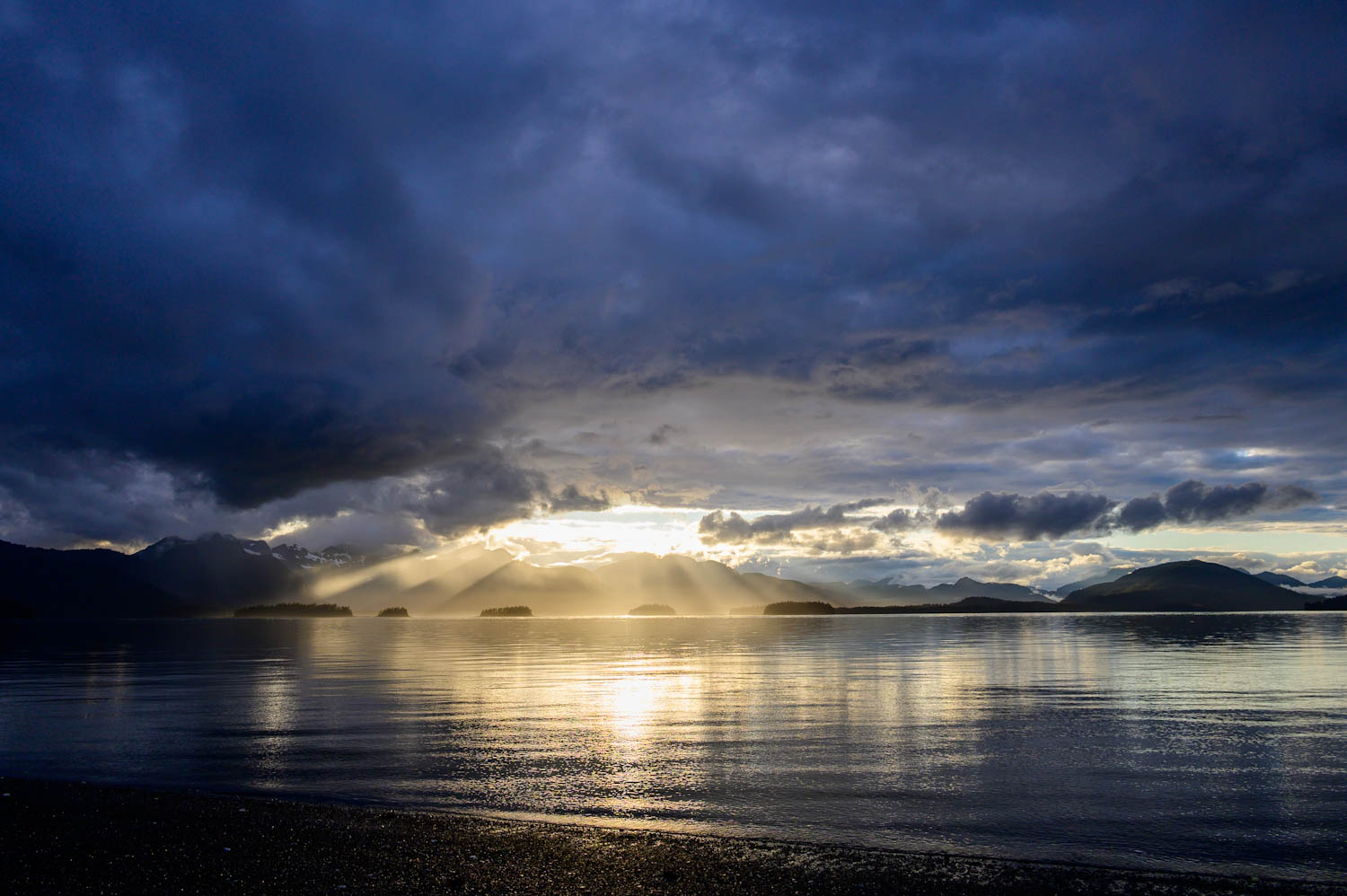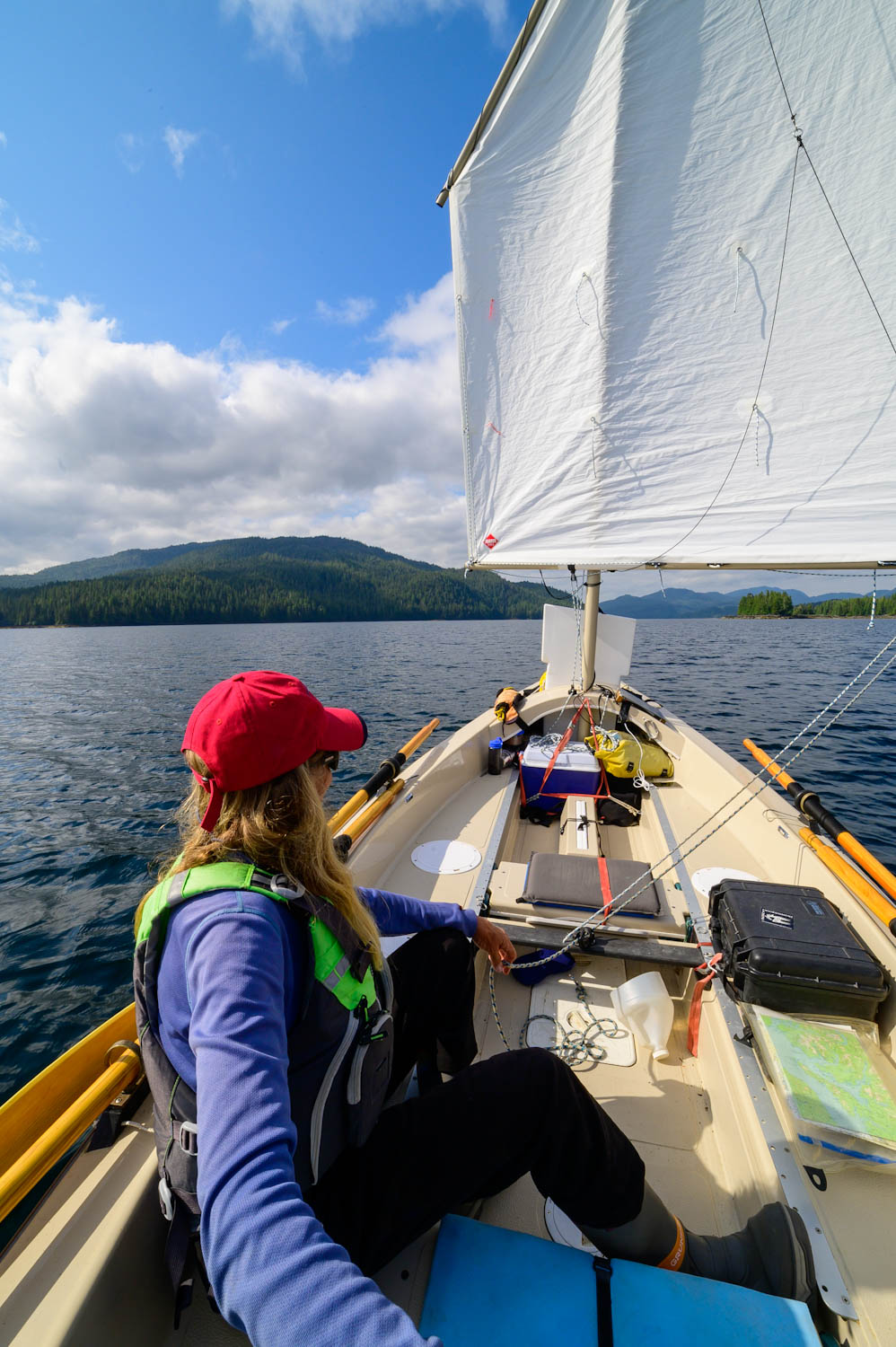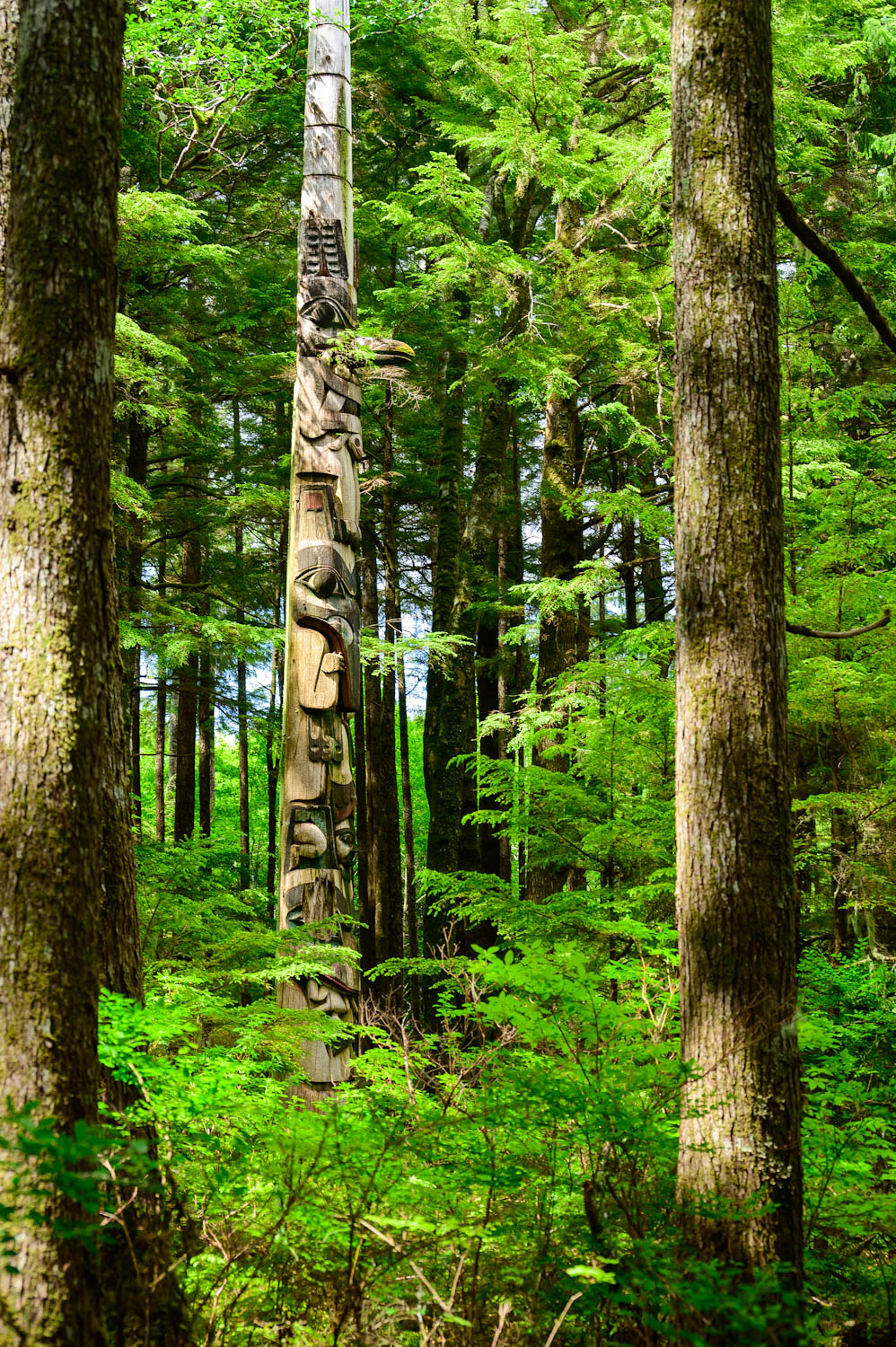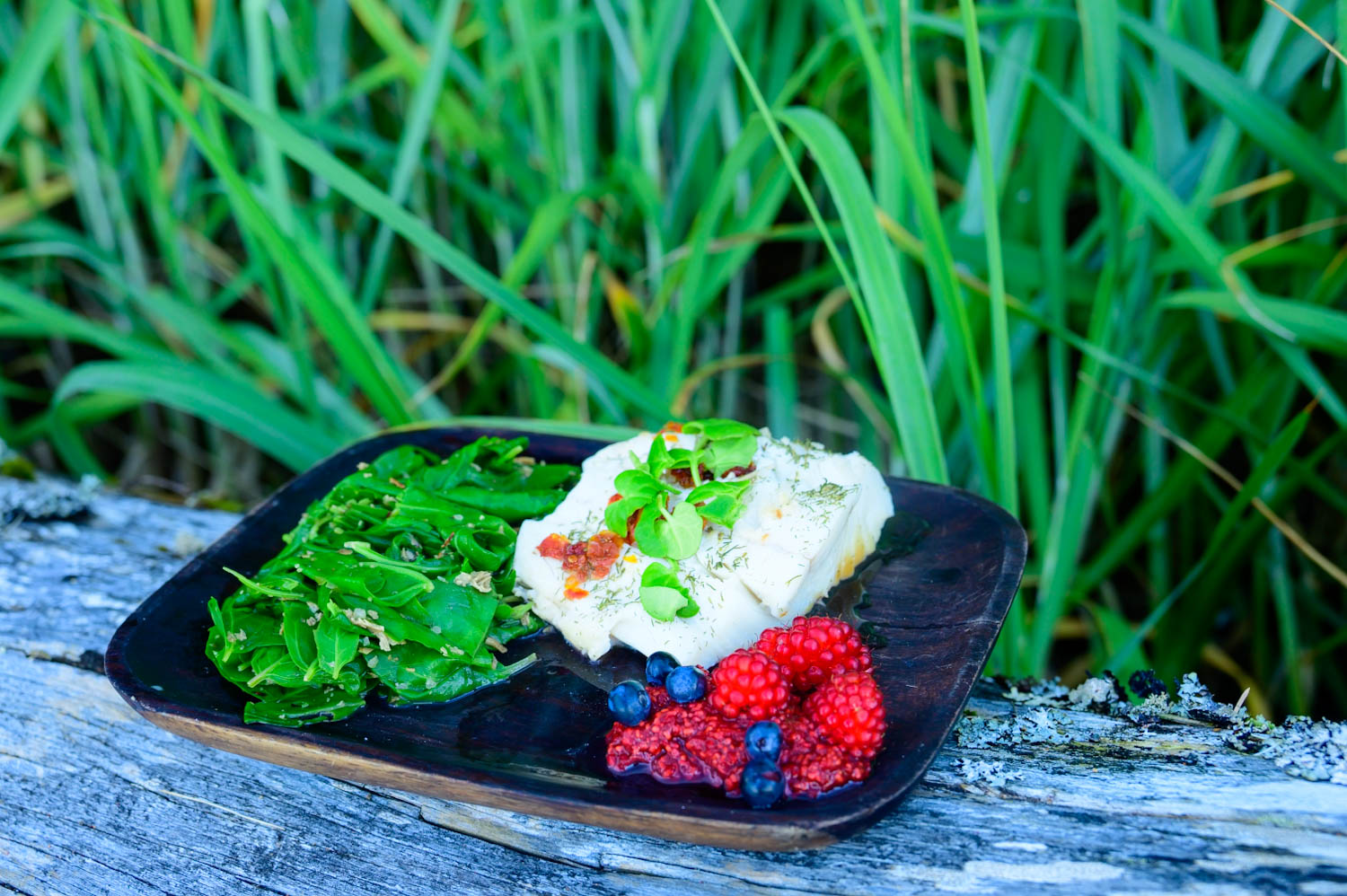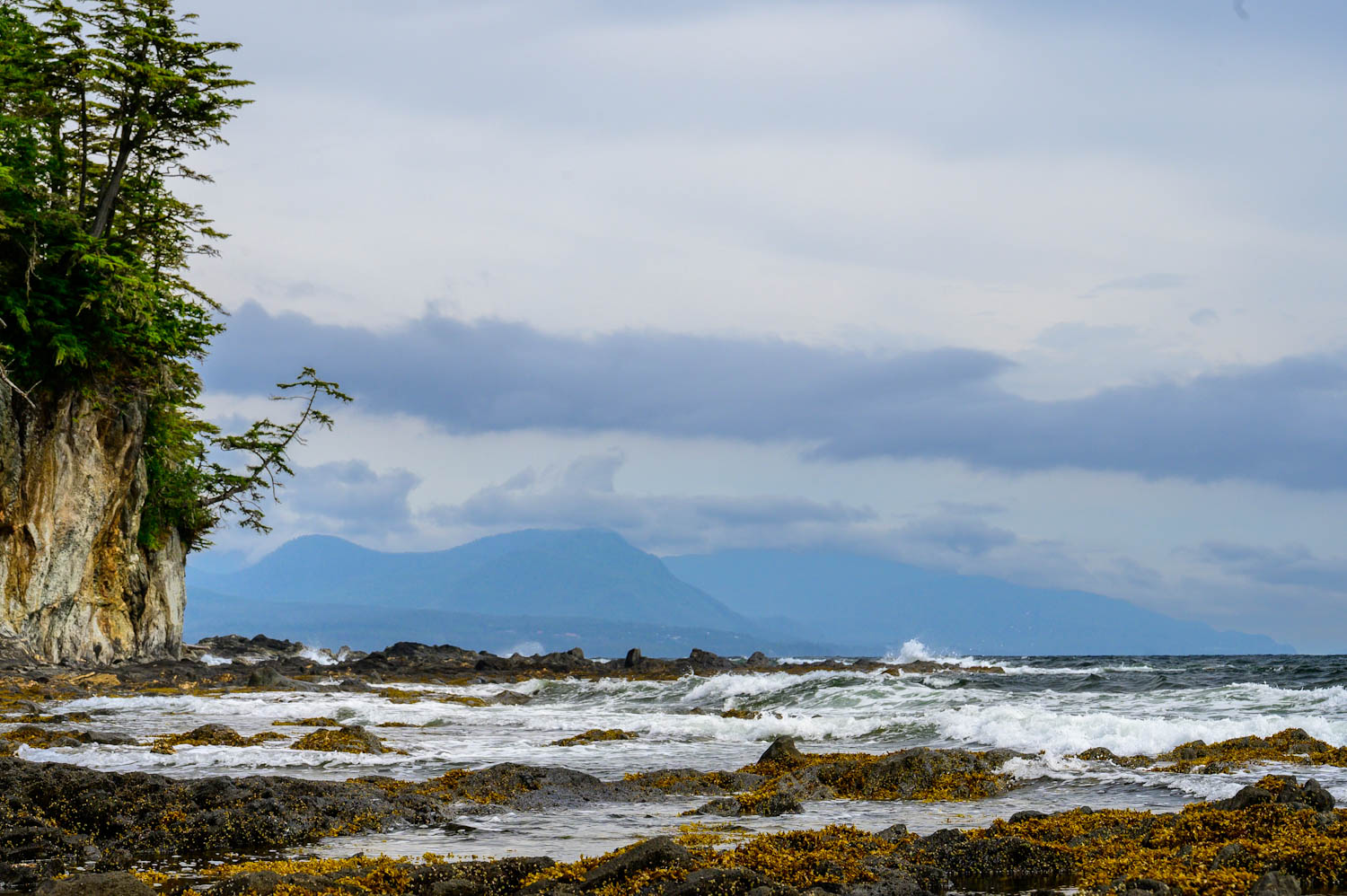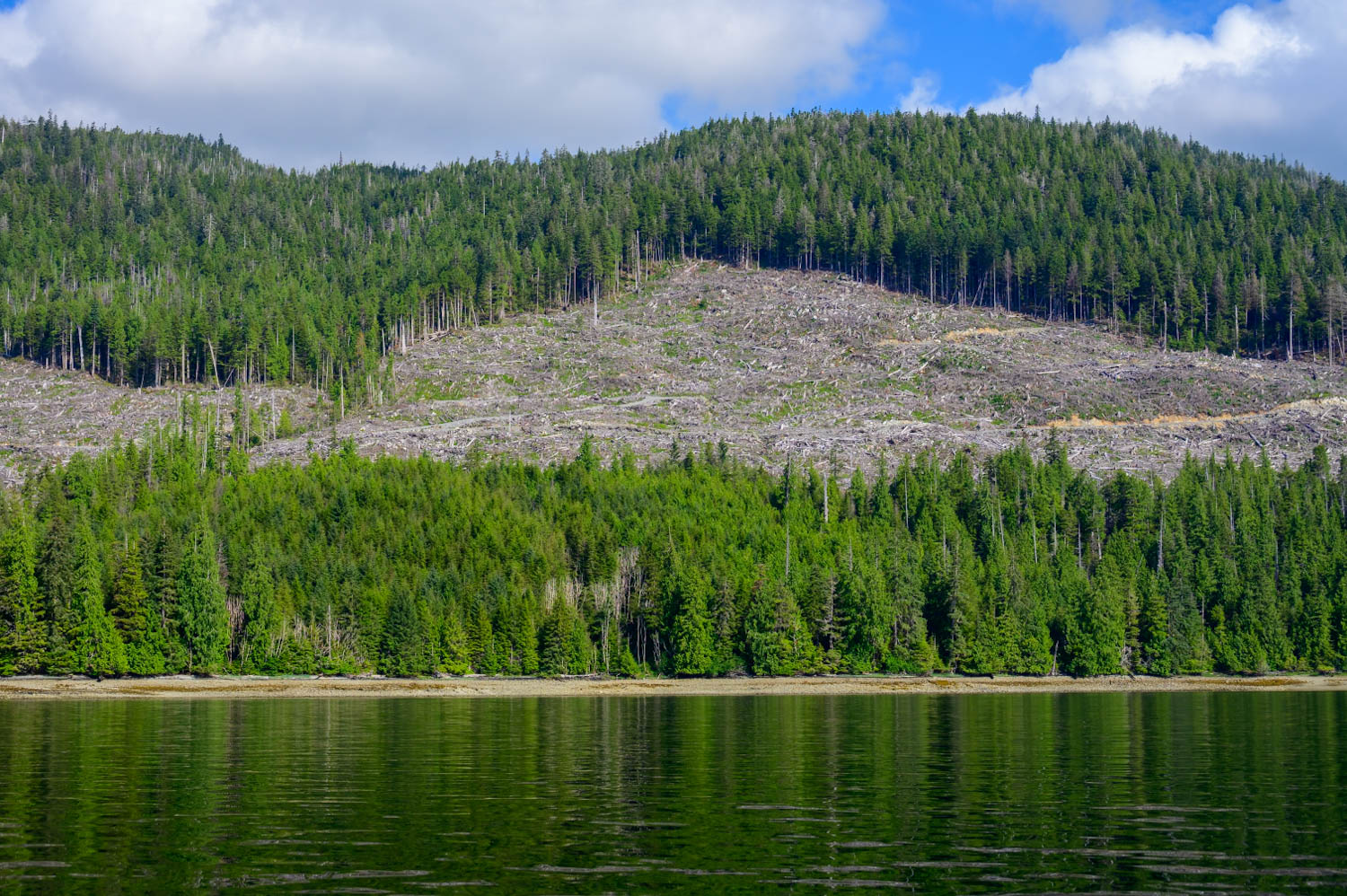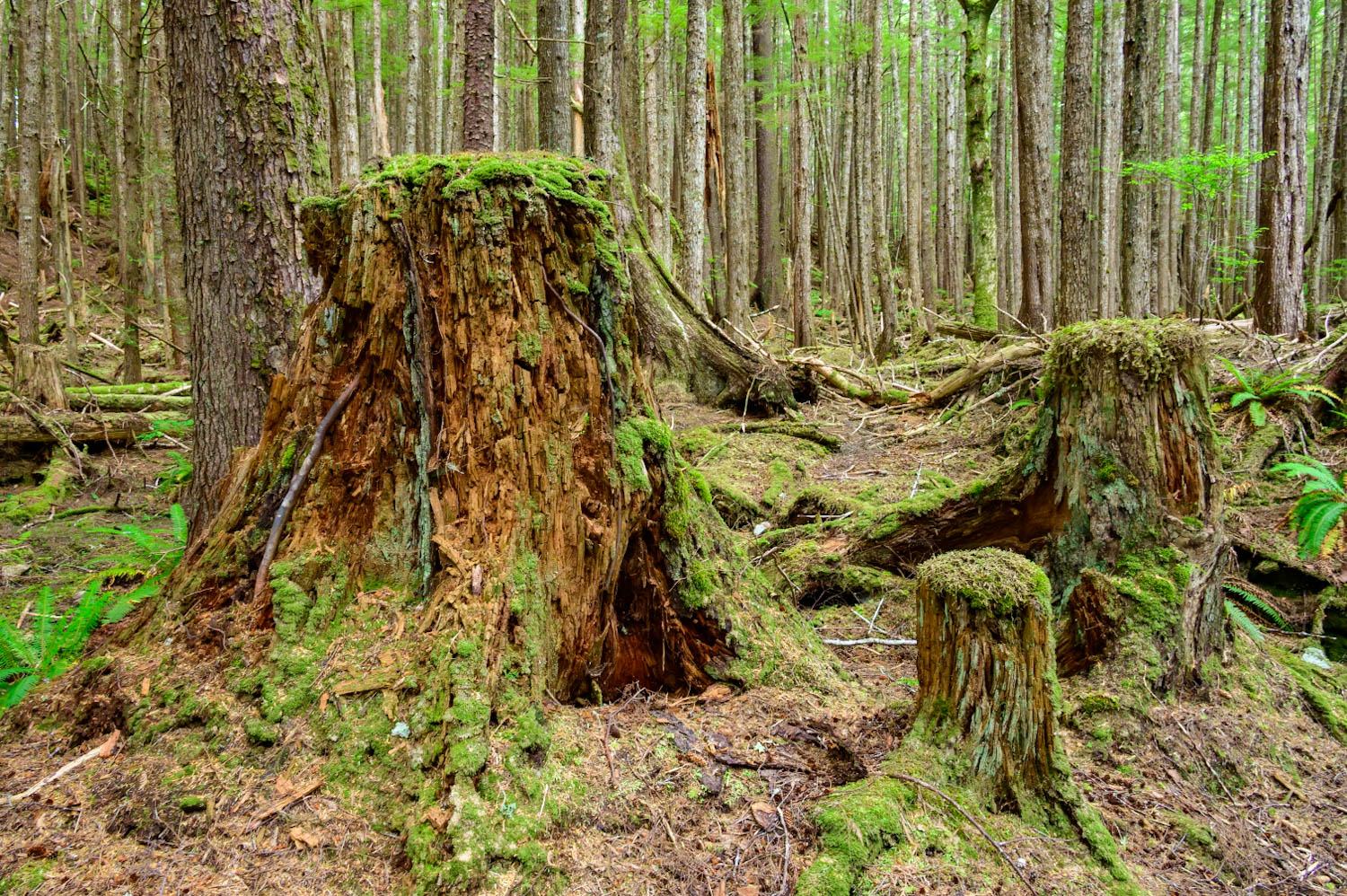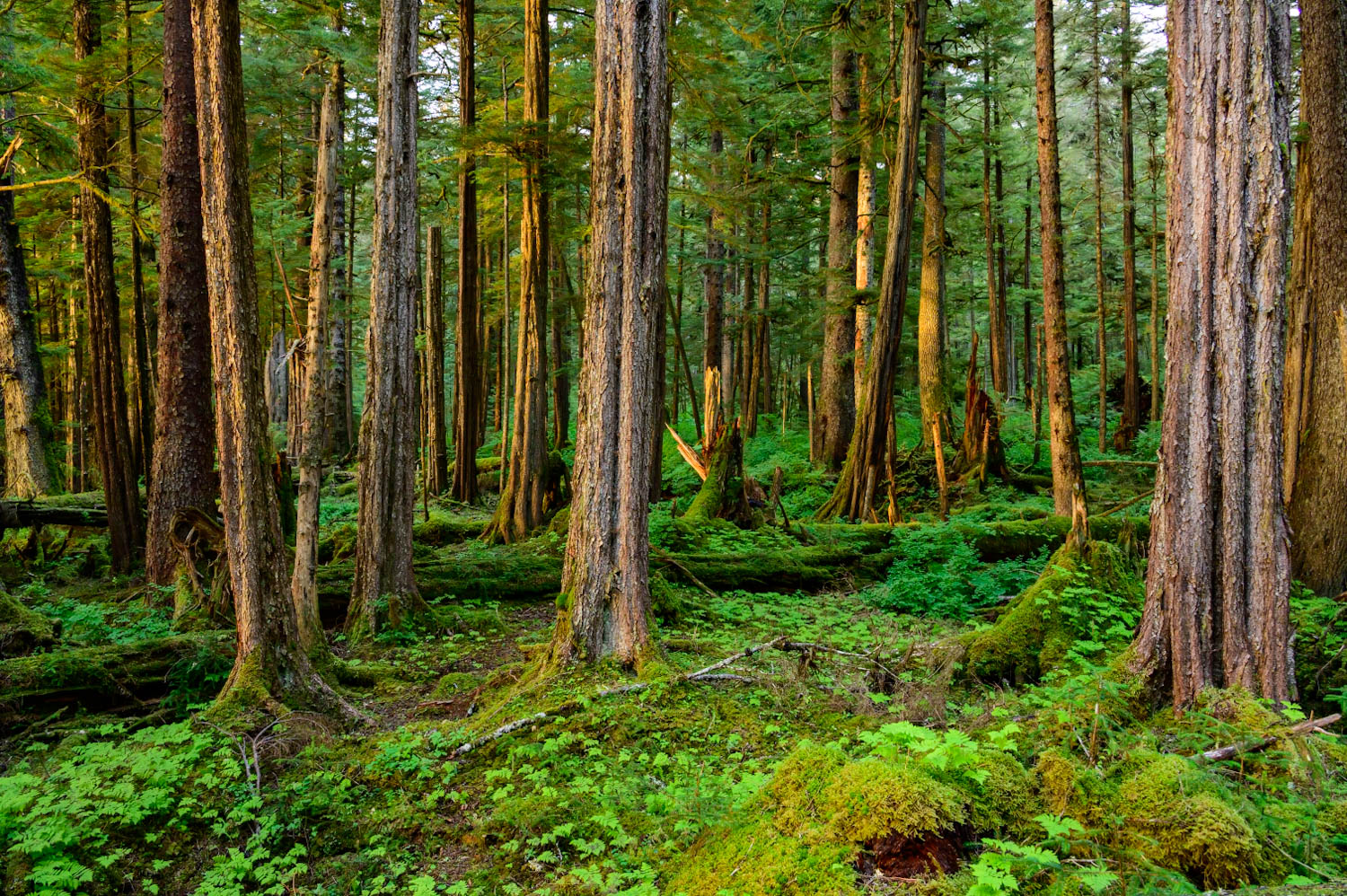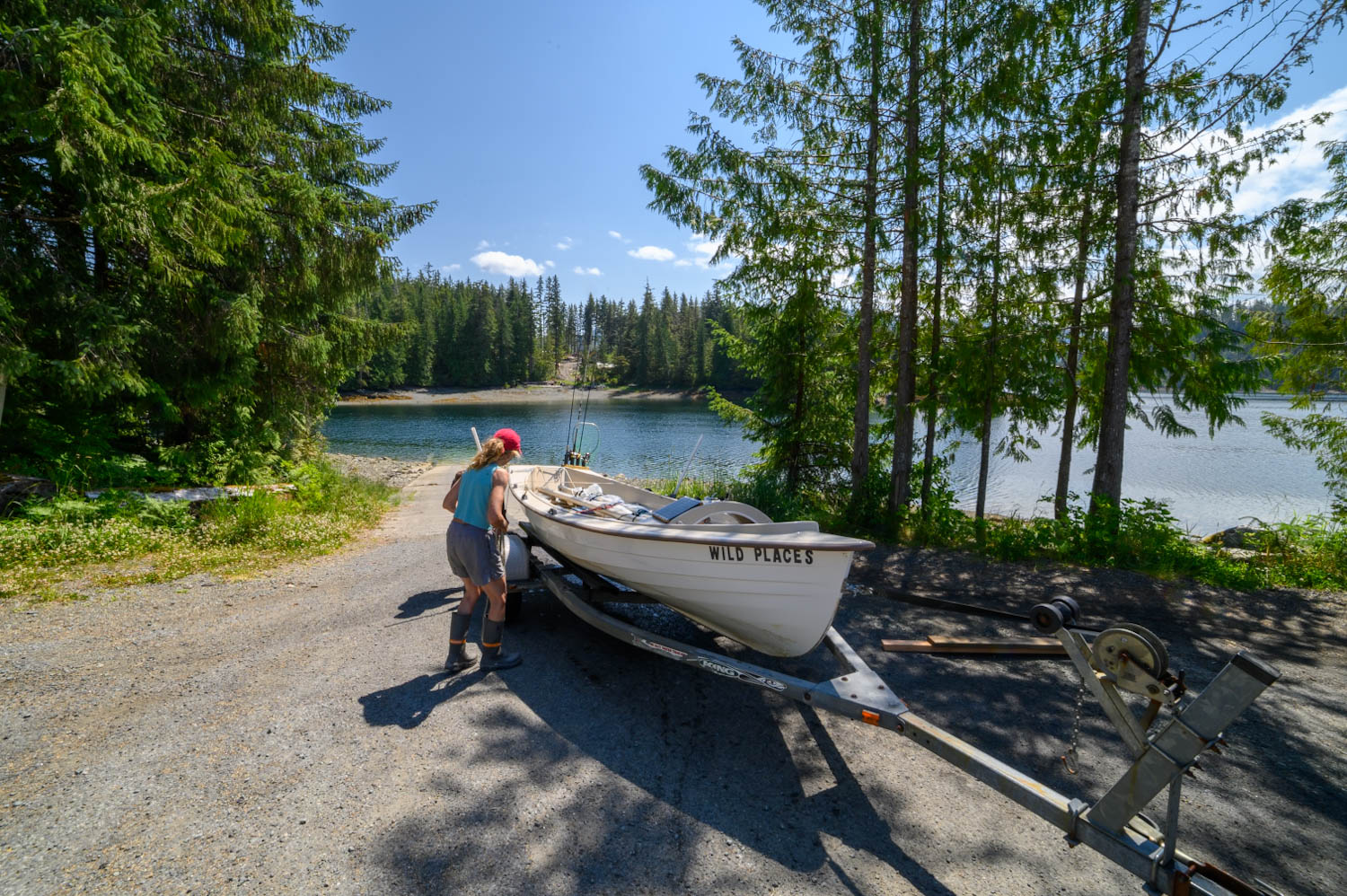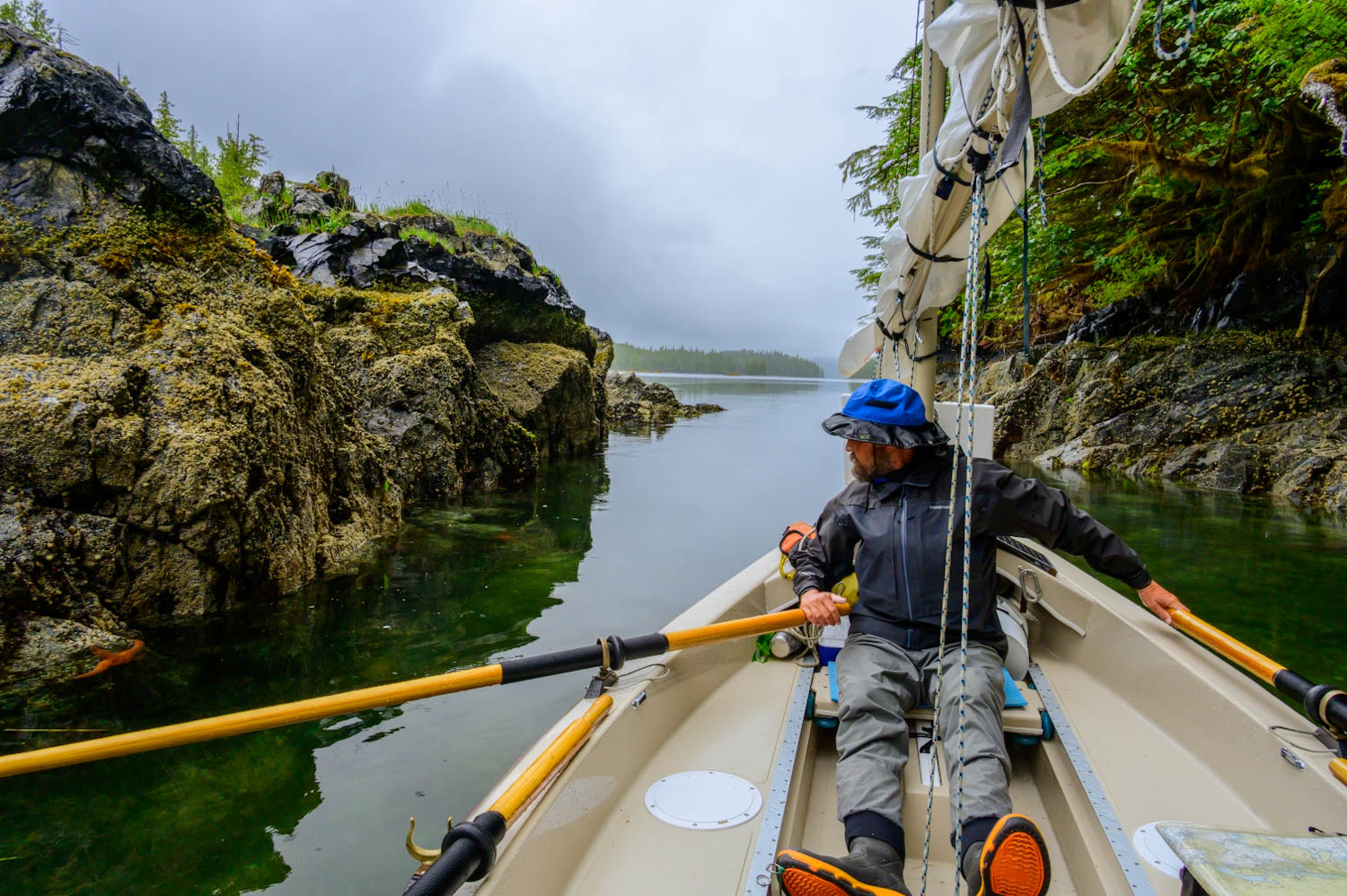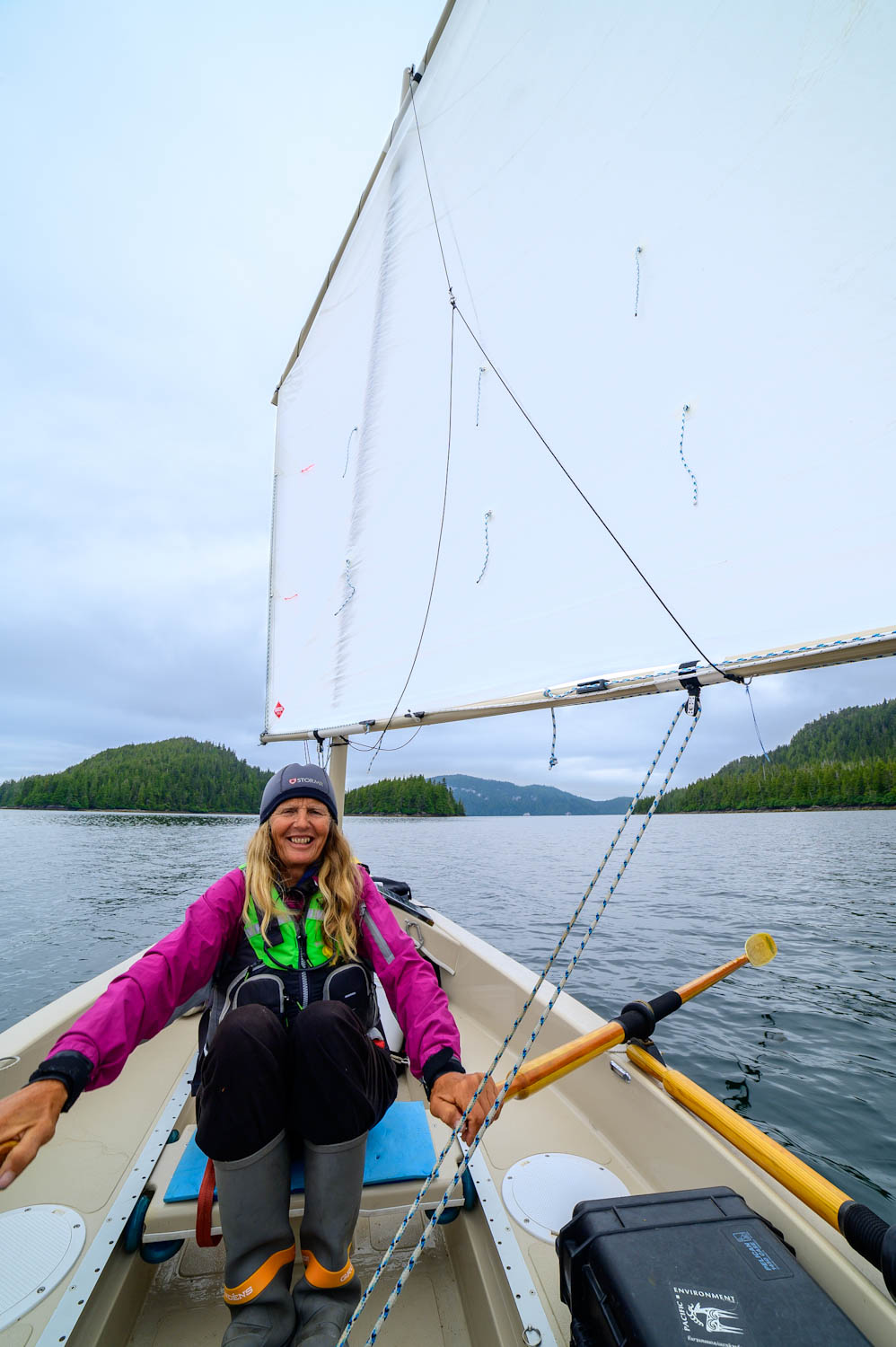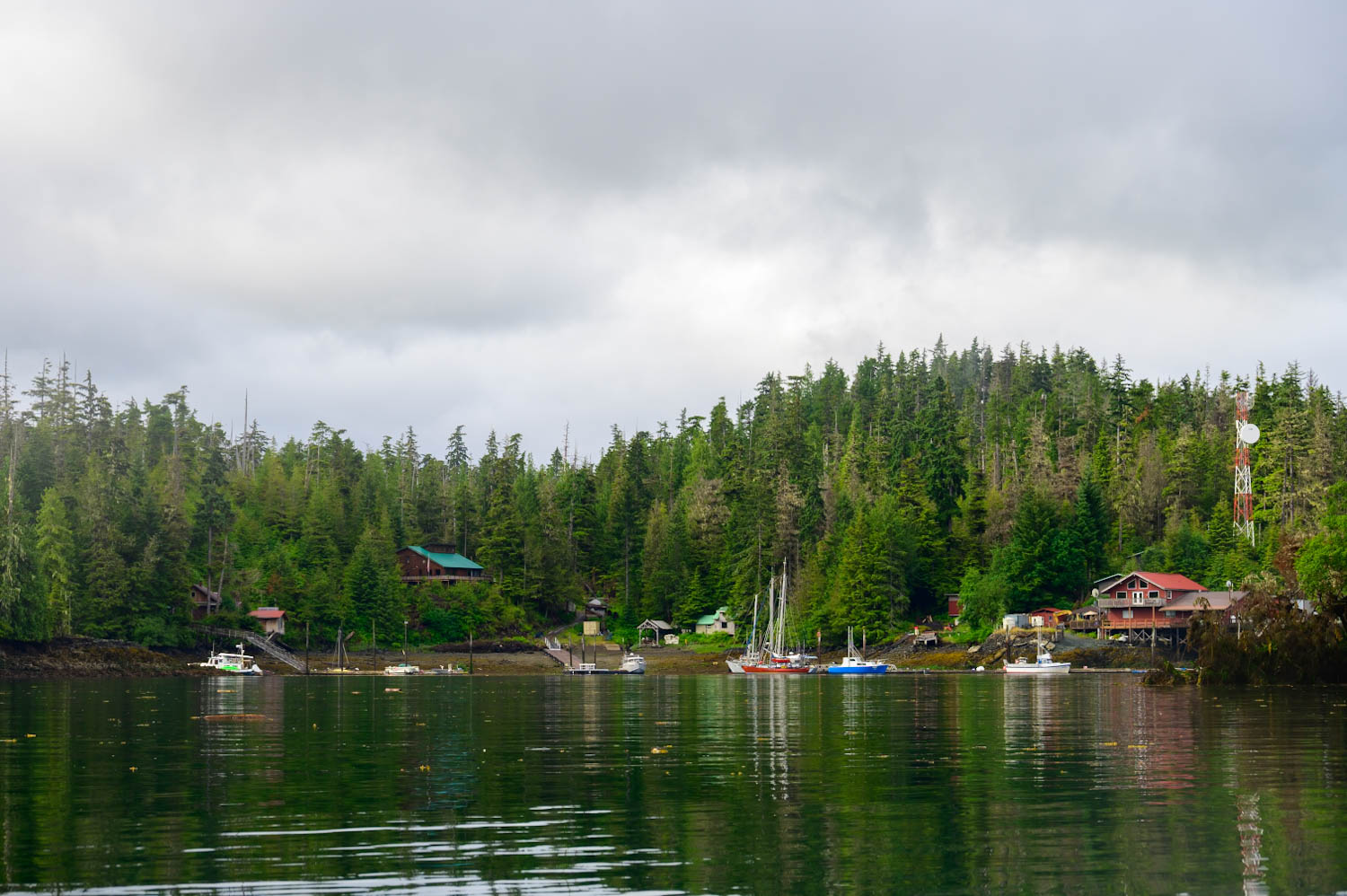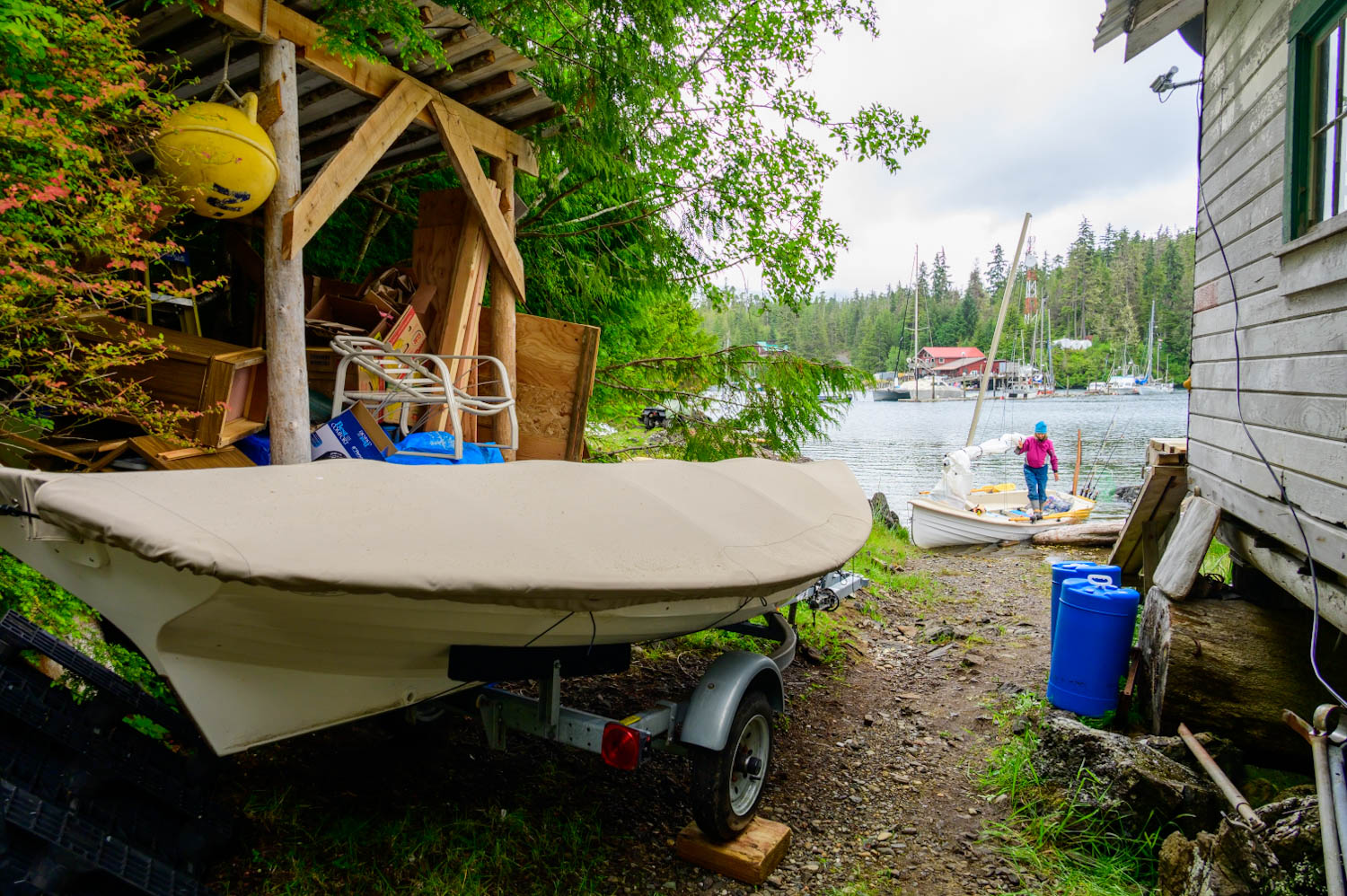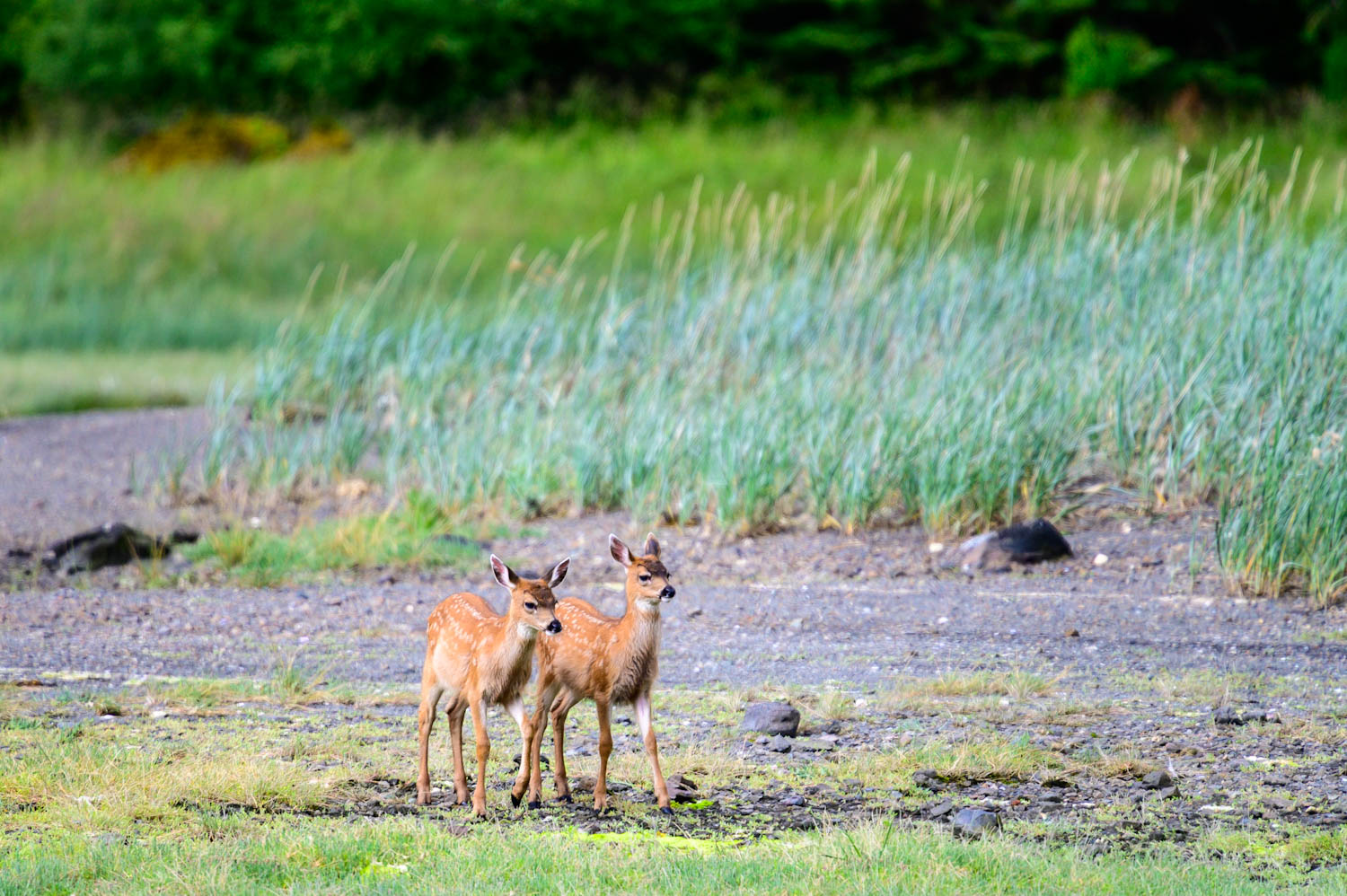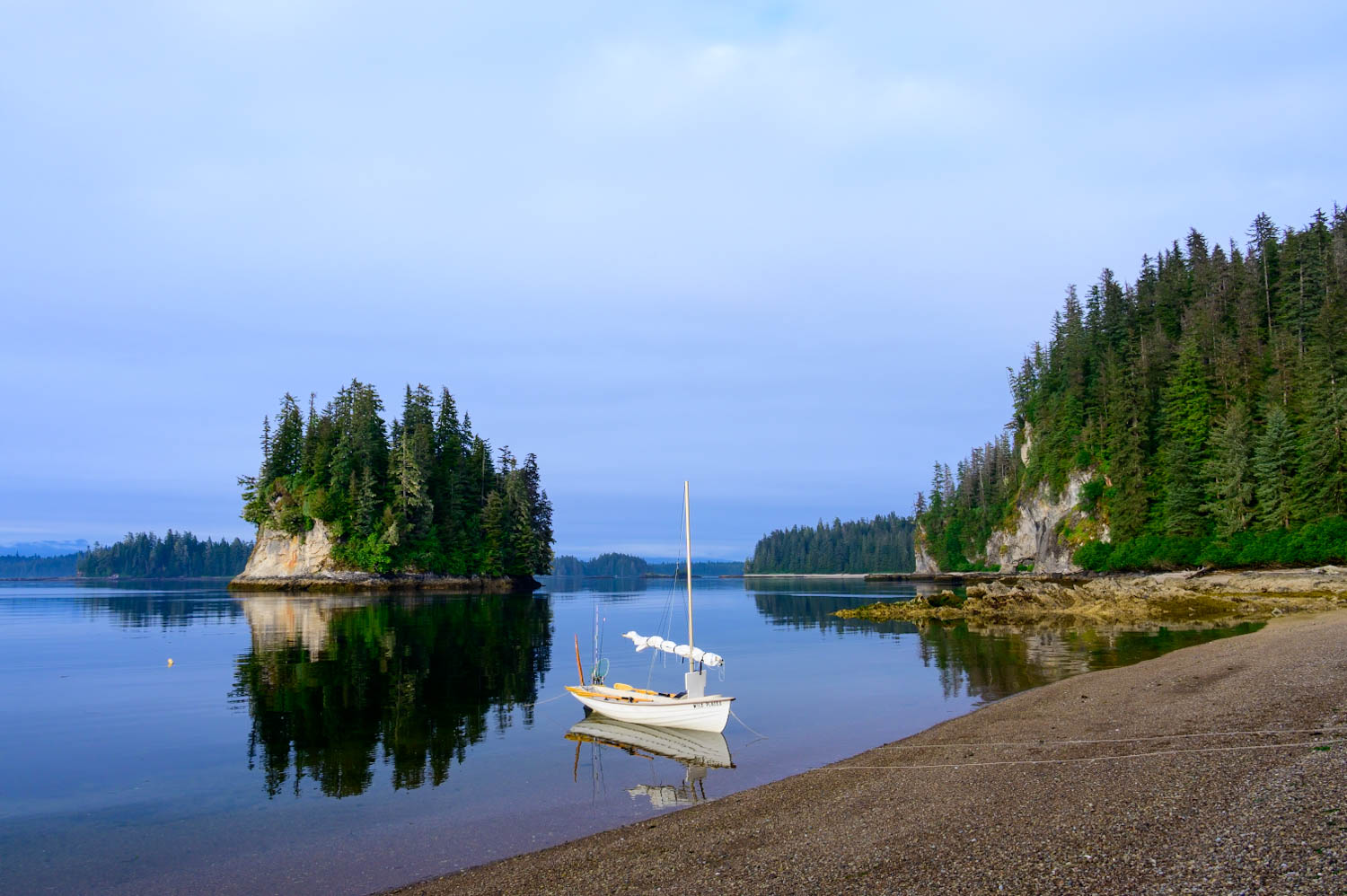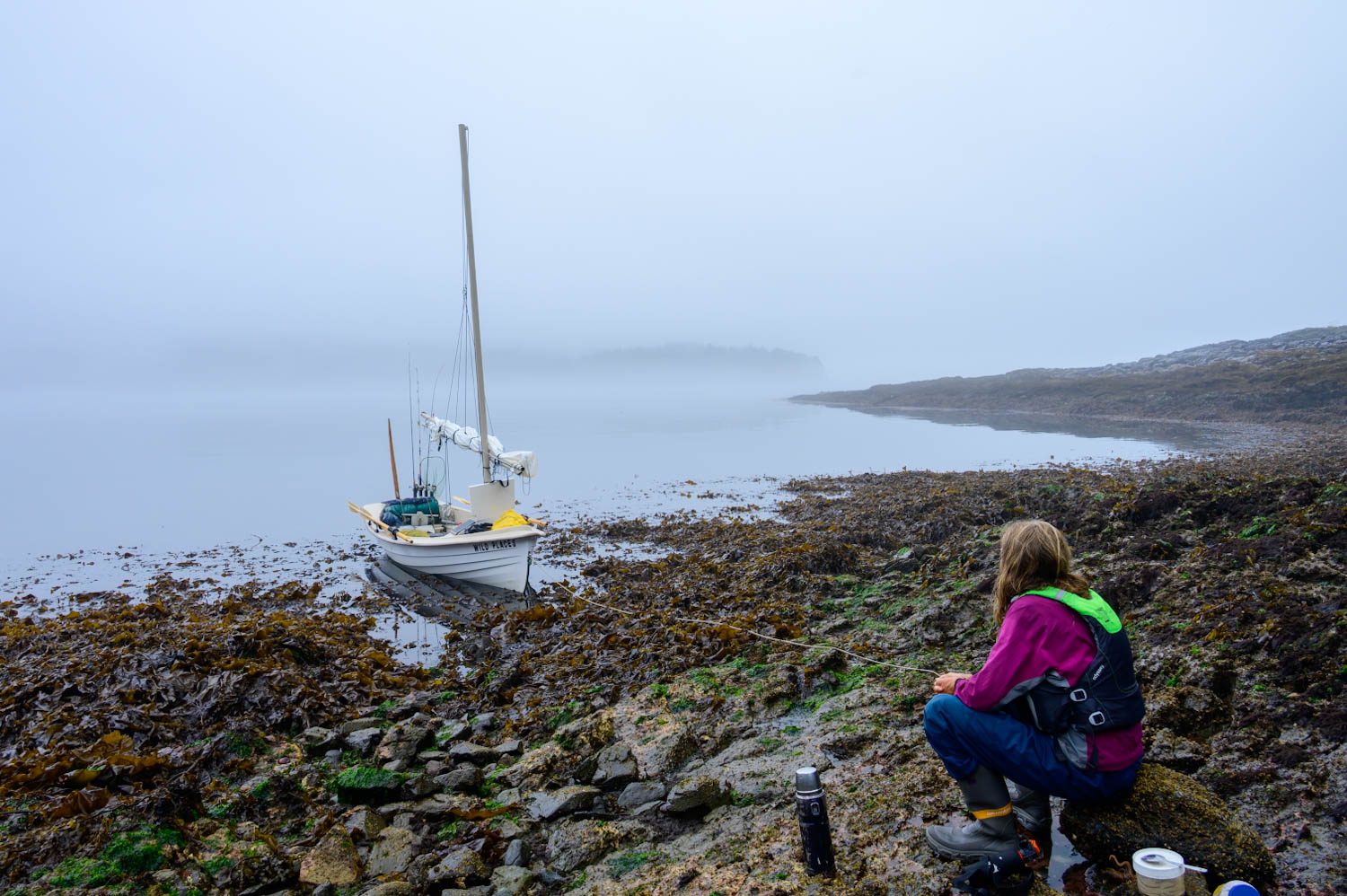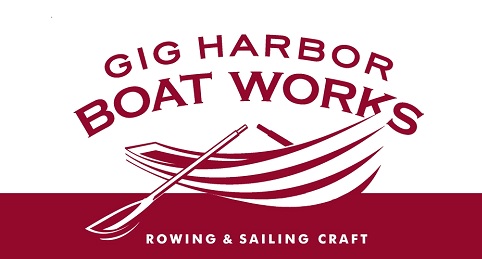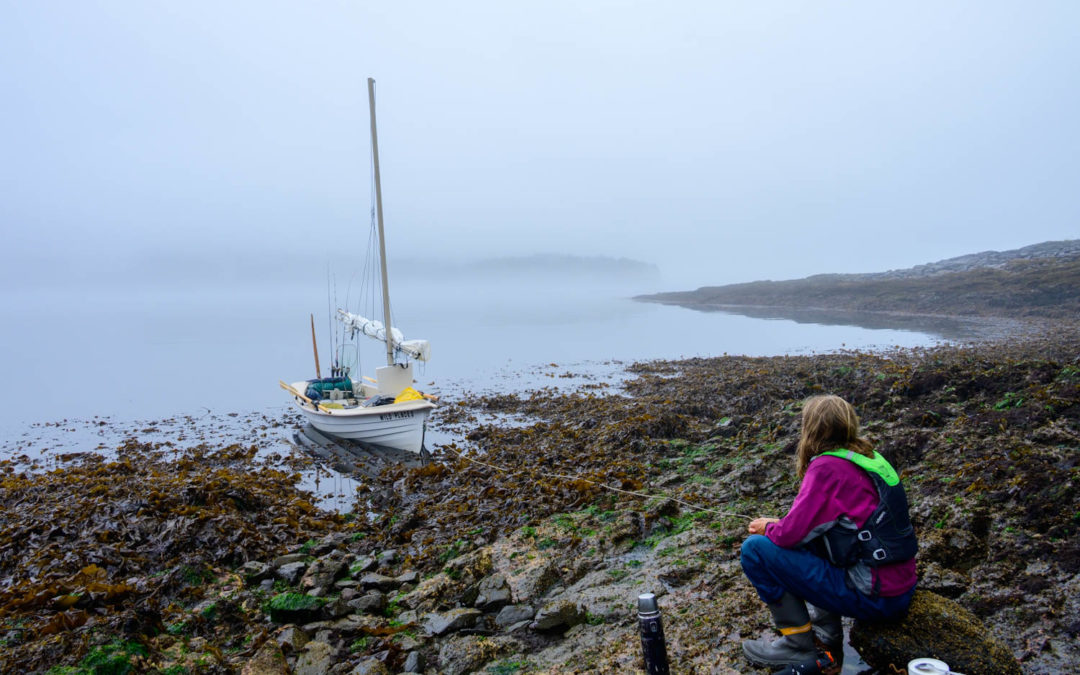After thirteen and a half months and 1,500 nautical miles, being on the water with our Salish Voyager “Wild Places,” seems like our normal life. Yet, every day is different. Every day has its own magic; we never know when it is coming. When we are wet, tired and seasick; out of the fog comes a pod of orcas.
While the decision to turn northward was difficult, putting the predominately Southeast winds at our back has resulted in days of delightful sailing. Being on a more relaxed schedule has allowed us to meander through the archipelago noticing the details, as well as catching and gathering a large part of our own food. Hitting a period of 25 knot winds and heavy rain just south of Juneau gives us time to reminisce about the most recent section of our trip.
Each island has its own character.
Prince of Wales Island brought us clear cuts, limestone caves, ancient petroglyphs, and Tlingit garden spots. The island also had something else unique in Southeast Alaska—a road system. Is it possible to hitch-hike with a Salish Voyager? We aimed to find out.
The birds we saw in early May have bred, nested, raised their young, and our now flocking up for their long journey south. There is the first hint of color in the foliage, and the storm systems are becoming longer and wetter. Change is coming for us as well. The final leg of our journey will be returning north up Lynn Canal to Haines.
It will take time to digest all we have learned about our boat, ourselves, and this wild coastline. We will report to you once more when the trip is over. We are thankful to Gig Harbor Boat Works, for their contribution to this journey, and creating a great boat to accomplish it with.
